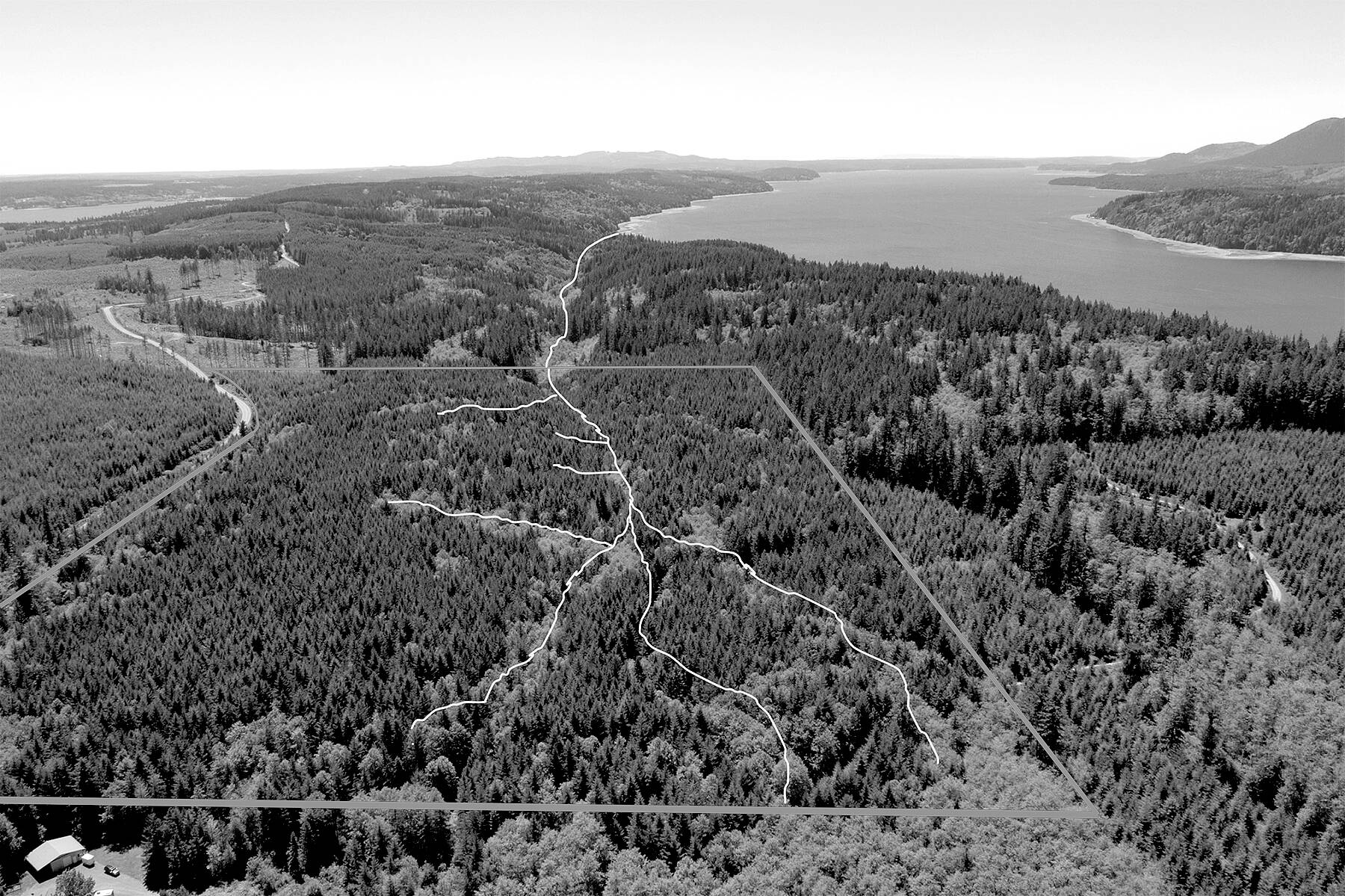QUILCENE — Ninety-one acres of forest and streams at the headwaters of Discovery Creek, a major tributary to Dabob Bay in East Jefferson County, have been acquired by Northwest Watershed Institute.
The acquisition on May 12 means the land will be permanently protected by the nonprofit organization that has focused on land conservation and habitat restoration along Tarboo Creek and Dabob Bay for 20 years.
“The project completes preservation of nearly the entirety of Discovery Creek, which is the second largest freshwater source to Tarboo-Dabob Bay,” said Peter Bahls, executive director and biologist at NWI.
Discovery Creek flows from the purchased property about 2 miles to Dabob Bay.
Most of the downstream watershed of Discovery Creek has already been permanently conserved as part of the state’s Dabob Bay Natural Area.
The land purchase is one piece of a long-term landscape-scale effort to protect the Tarboo-Dabob Bay ecosystem, which, Bhals said, is nationally recognized for its rich marine resources and shellfish. The larger effort involves more than 40 organizations who, working with NWI, have protected 4,500 acres since 2002, Bahls said.
“The preservation of this remaining property will not only protect a diversity of wetland, stream, and forest habitats for coastal fish and wildlife species, but also will help maintain the water quality of Dabob Bay and its abundant marine life,” according to an NWI press release.
Native Americans have harvested shellfish, crab, shrimp, salmon and other estuarian species from Dabob Bay for thousands of years, and the bay continues to support harvesting by four tribes that share treaty rights in this region.
The bay is also important for public recreation and commercial shellfish production. The waters sustain one of the largest shellfish hatcheries in the world, owned by Taylor Shellfish Company.
The acquisition safeguards the habitat of many at-risk native species including federally listed steelhead salmon, coho salmon, coastal cutthroat trout and western brook lamprey. Forests and wetlands on the property provide habitat for iconic birds, amphibians and mammals native to the Pacific Northwest, and they also provide a migratory corridor for the state-endangered fisher and other wildlife.
The property was purchased from Rayonier for $925,000 with funding from state, federal, tribal and private sources.
Most of the funding was provided by a grant from the U.S. Fish and Wildlife Service’s National Coastal Wetlands Conservation Program.
The grant was secured through state Department of Ecology, in partnership with NWI.
“Rayonier is proud to work with the Northwest Watershed to protect this important 91-acre property,” said Rhett Rogers, Rayonier’s vice president of portfolio management.
“As sustainable forest managers, we protect water on all our properties. We also recognize that there are special places with a higher purpose, and this is one of those places.”
In addition, NWI worked with Jefferson Land Trust and U.S. Navy to secure cost share funds through the Navy’s Readiness and Environmental Protection Integration Program.
The funding purchased a restrictive easement on the land that prevents development but does not grant any rights to the military for use of the property.
Additional contributors to the project included Taylor Shellfish Company, the Port Gamble S’Klallam Tribe, and private citizens and landowners in the area.
NWI stewardship will include removal of invasive plants such as English ivy and English holly, and selective forestry and thinning of plantation forests to help restore diverse older forests over time. NWI also plans to conduct tours, education workshops and long-term biological monitoring.
“Our coastal wetlands and estuaries provide vital nurseries for salmon and other important fish and wildlife species. This project will help ensure the Dabob Bay and its tributaries are set aside for coming generations to explore and enjoy,” said Ecology wetlands manager Lauren Driscoll.

